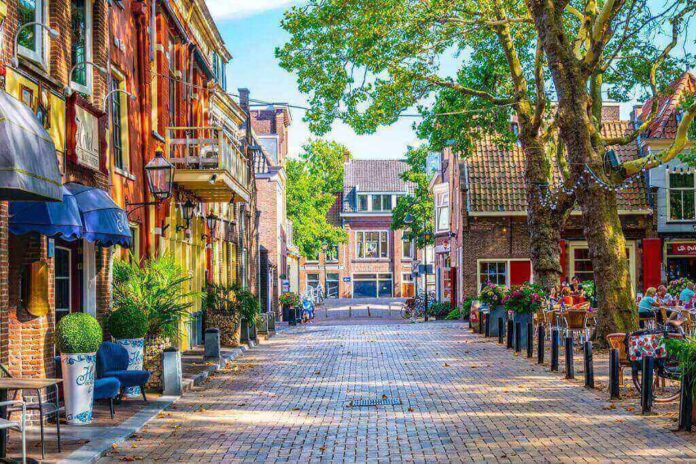The modest Dutch town of Delft may be unknown to you, yet it enjoys great fame in its own country. Actually, nine centuries ago, it was the third-largest and richest Dutch city. These are 10 reasons you will want to visit this wonderful city.
1. The Netherlands’ finest aerial view
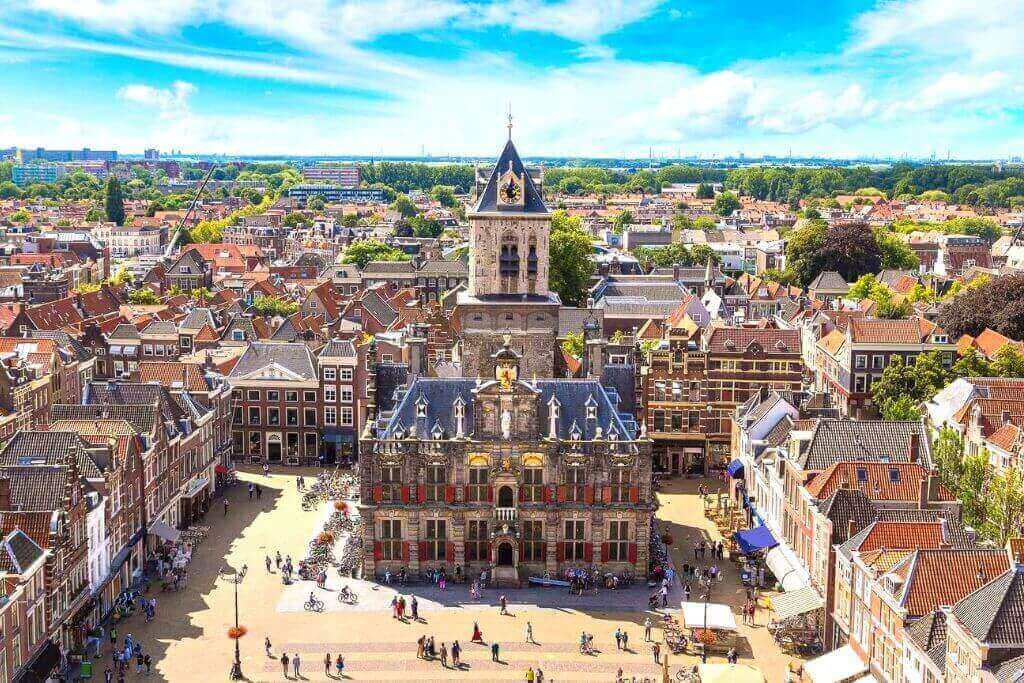
The majestic New Church (Nieuwe Kerk), constructed in 1381, is not precisely new. The second-tallest tower in the nation, it has a 109-meter tower that provides a breathtaking perspective over Delft’s ancient canals, streets, and rooftops all the way to The Hague in the distance. In the “flat country,” this is by far the finest tower view I’ve ever seen.
2. One of the Netherlands’ most attractive cities in Delft
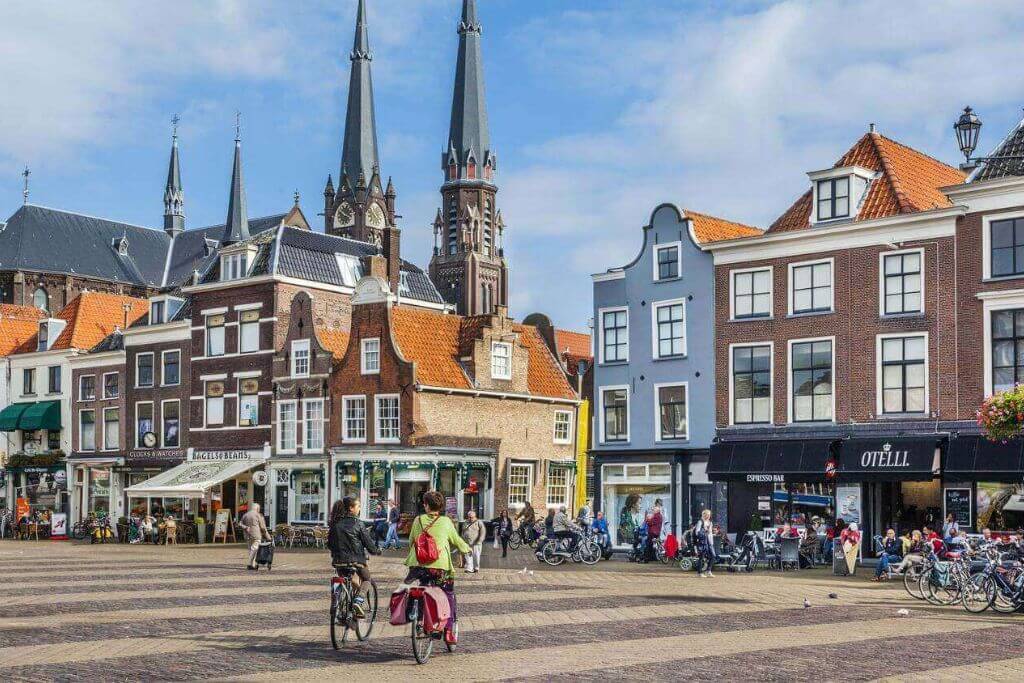
Delft resembles a smaller version of Amsterdam but is prettier, more untouched by mass tourists, and has a stronger sense of the “true Dutch” culture. Depending on the museums you want to see, it is small enough to be seen in a day or two. With all the greatest places being close to one another, it is perfect walking.
The Prinsenhof (Princes’ Court) museum, Royal Delft, and the historical windmill are additional museums in addition to the Old and New Churches with the Tower, Vermeer Centrum, and the museums of the churches. With its charming atmosphere and the out-of-time beauty of its small canal alleys, the town never fails to leave an impact on tourists. It’s a delight to be here.
3. Medieval buildings, alleys, and canals are immaculately kept
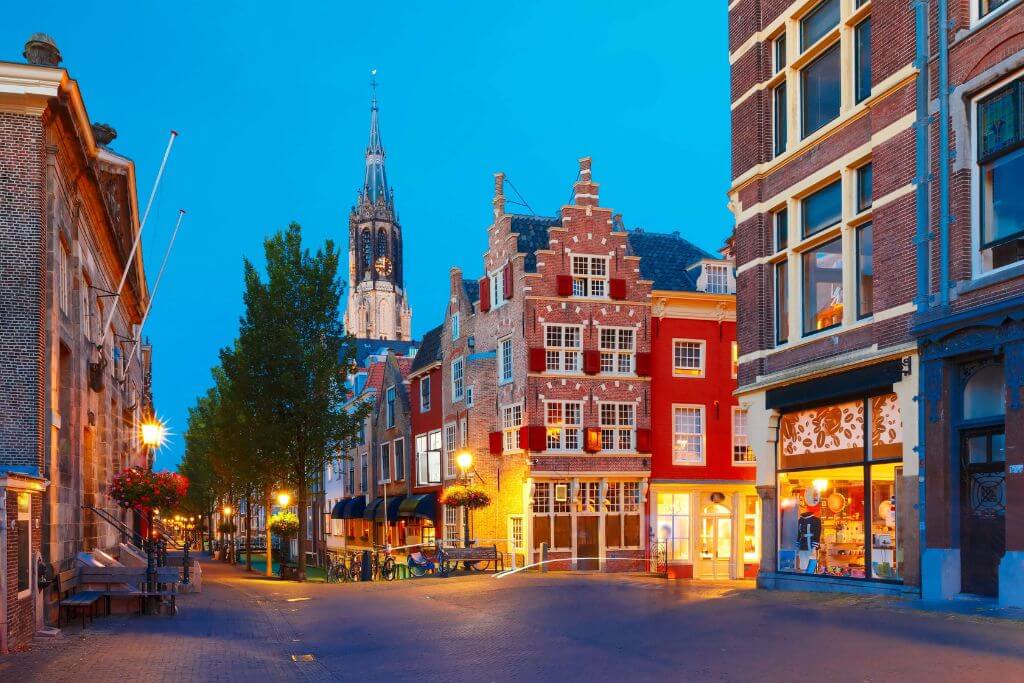
Delft has many areas that have not been impacted by modernity. It has kept all of its beautiful medieval and Renaissance urban tissue. You’ll experience time travel when the city center is lit up by low lamps in the evening.
- Do you know What Makes Delft Such A Charming Dutch City?
4. Leaning tower from the Middle Ages
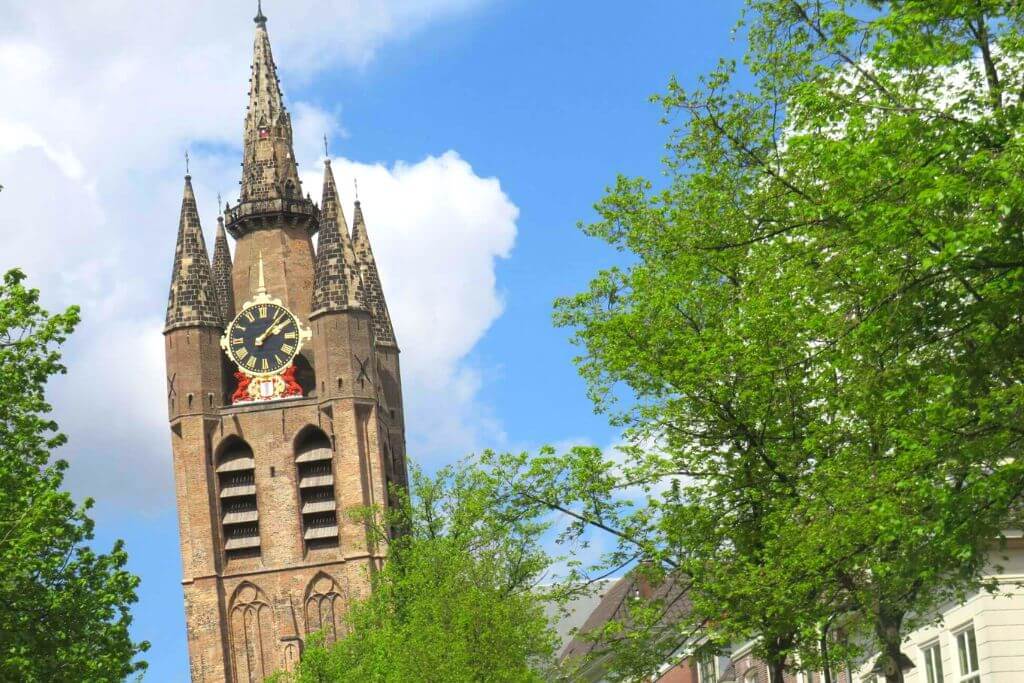
The Old Church (Oude Kerk), which dates back to 1246, includes a 75-meter-tall tower known as Scheve Jan, or “Skewed John,” skewed almost two meters to the vertical.
Some perspectives, particularly those coming from either side of the lovely canal street Oude Delft, give you the distinct feeling that the tower is about to collapse. The Delft Slanting Cup, a coffee and chocolate beverage served in a specially crafted leaning-shaped cup, is a delightful offering from the adjacent Stads Koffyhuis café. It’s quite wonderful!
Some of the most significant Dutch figures, including heroes, noblemen, artists, and scientists, such as the painter Johannes Vermeer (1675) and the inventor of the microscope Anton van Leeuwenhoek, are buried in the Old Church (1723).
5. The Vermeer Museum
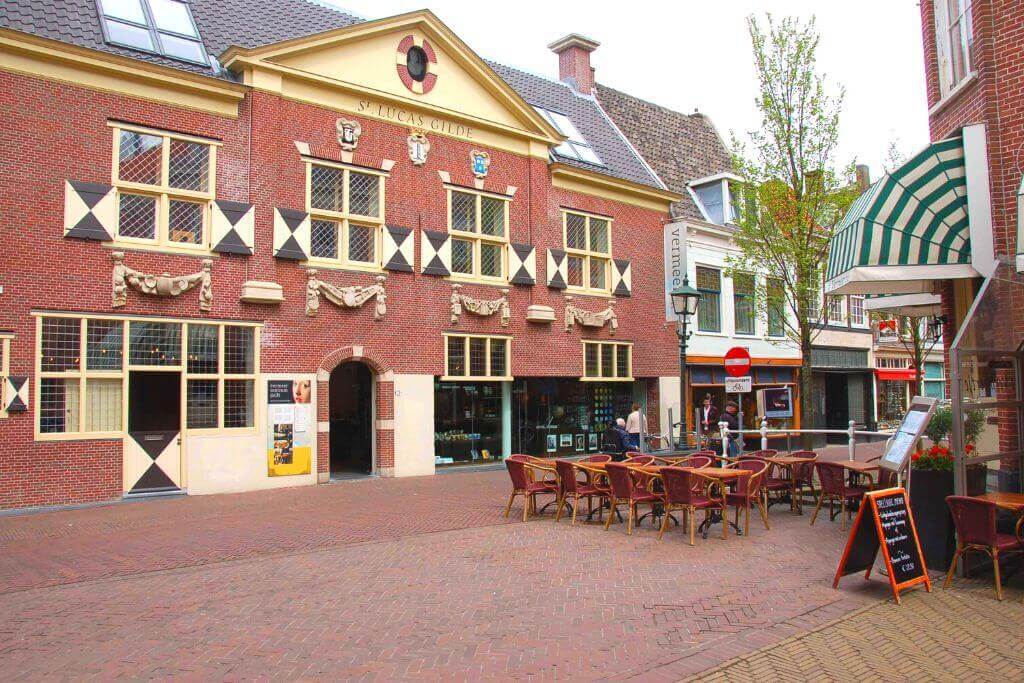
During the Dutch Golden Period, Johannes Vermeer (1632–1675) was one of the most admired painters. He wasn’t just born there; it seems like he didn’t venture far from Delft. For a thorough account of the era in which he lived, the influences he was subjected to, and perhaps most intriguingly, his skillful use of light in all of its hues and forms.
Check out Vermeer Centrum Delft. There are no authentic Vermeer paintings in the museum. Vermeer’s most well-known works are on display at the Rijksmuseum in Amsterdam and the Mauritshuis in The Hague (“Girl with a Pearl Earring”).
6. Delft is where Dutch white-blue ceramics are made
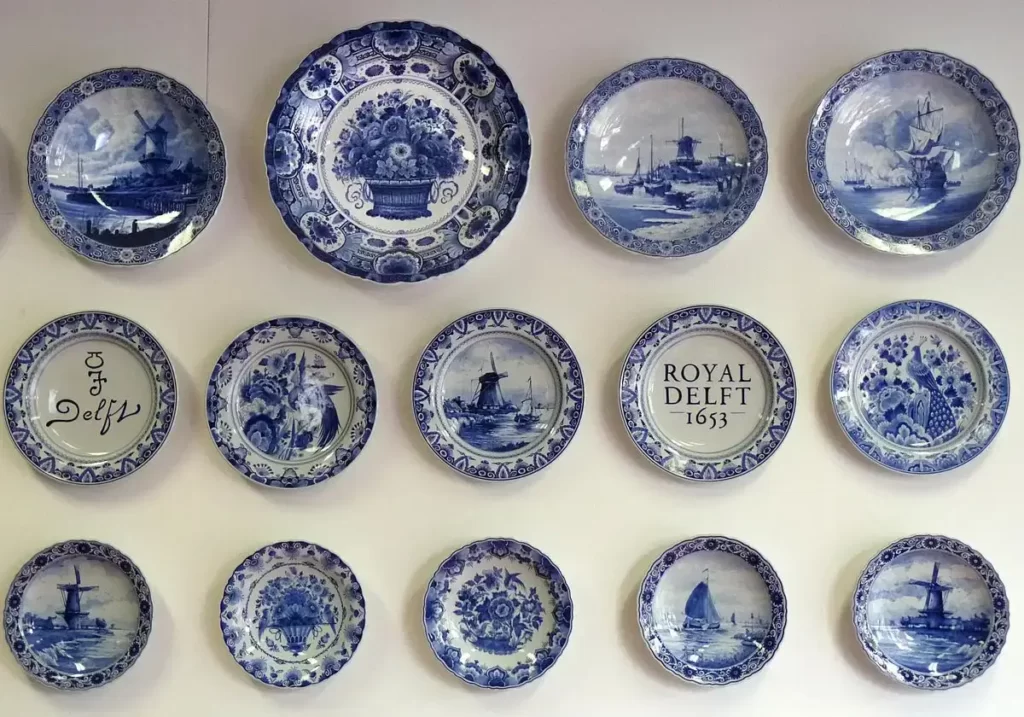
Delftware and Delft Blue are two names for Dutch porcelain. The delicate porcelain with intricately detailed scenes and individuals can be seen in any Dutch city, although it nearly invariably comes from Delft. In the 17th and 18th centuries, delftware was one of the most important commercial and export goods of the nation. The factory, which has been in operation since 1653, has a Royal Delft Museum.
7. Its coolest windmill is available for free public viewing
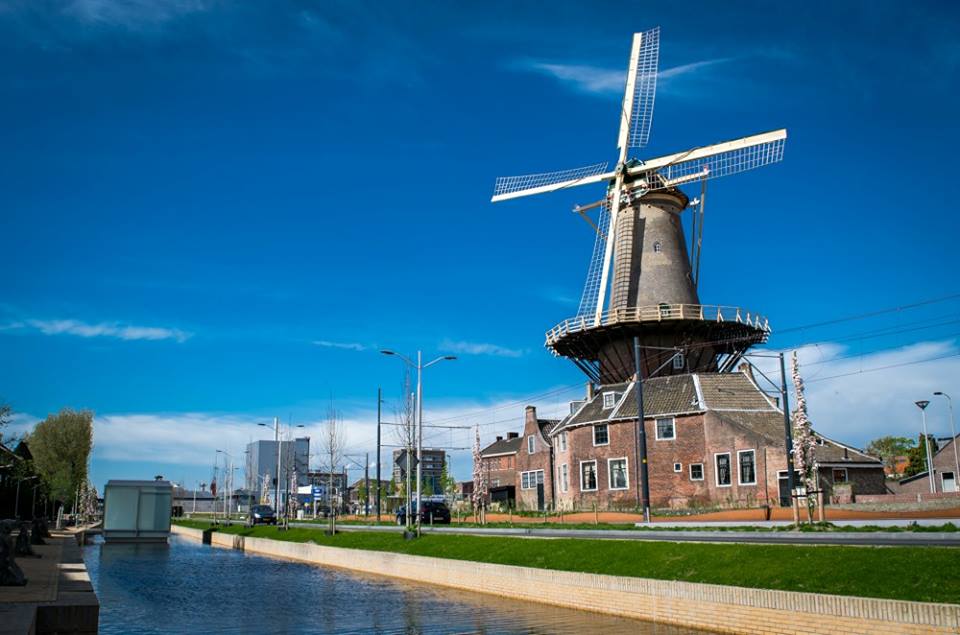
The lovely windmill in Delft is called De Roos (Rose), and it dates back to 1679. Out of the 18 windmills that formerly stood here since the fourteenth century, just this one remains. At the far end of Delft’s main street, Phoenixstraat, you can see its shape as you exit the spectacular main train station. The windmill is several stories tall, and the best part is that you can explore it at your leisure.
It is operated by kind owners who are happy to show you how to operate the windmill’s “sails” and keep it open for no fee. Don’t forget to visit the terrace on one of the top stories; it boasts a magnificent view over the city’s main square and street. Fresh pastries, bread made from flour it has milled itself, as well as other enjoyable mementos, like cookie cutters in the shape of windmills, are sold in the windmill shop.
8. Every Saturday, a charming flea market
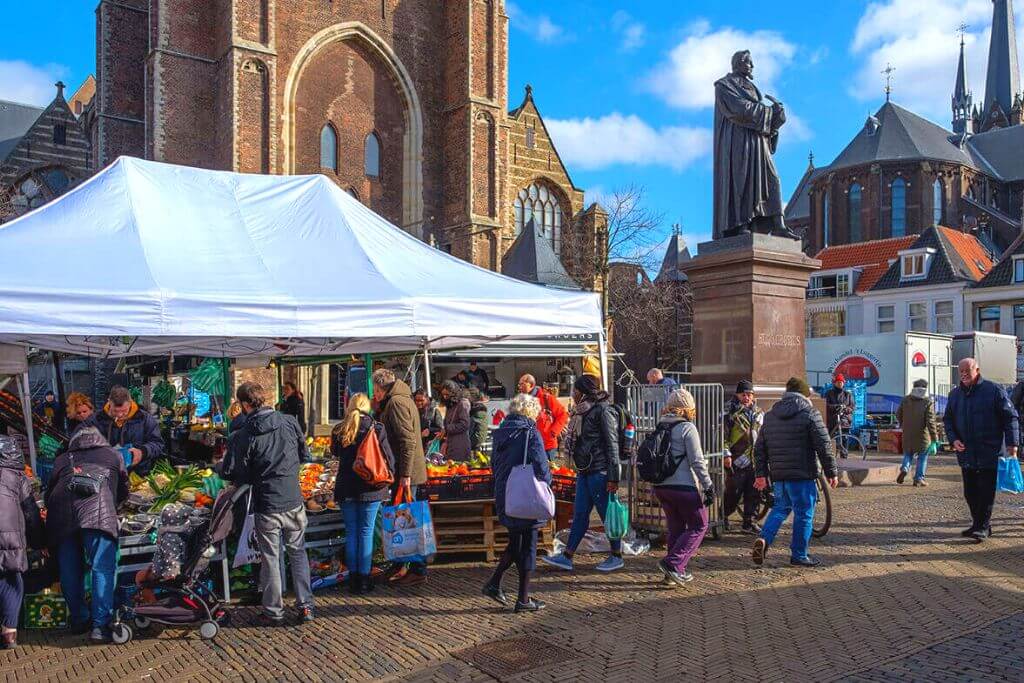
Come to the town on a market day to enjoy a truly Dutch atmosphere! Every Thursday and Saturday, there are markets. However, the latter is significantly more aesthetically pleasing. Street merchants set up shops along the canals and old alleyways, selling a variety of used vintage items, including metal goblets, vintage ice skates linked with shoes, and secondhand clogs (wooden Dutch shoes).
The atmosphere is excellent, there is loud music, a lively crowd, and tasty pastries like stroopwafels that may be purchased as mementos, but most of the items are nice things to buy as gifts.
9. The historic cattle market square’s cow monument
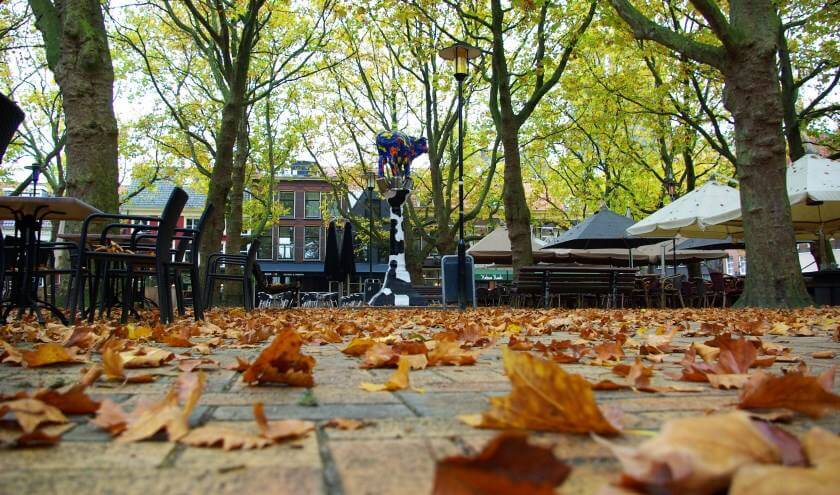
In Delft, there are several lovely old squares that are near one another. The charming Grote Markt, the city’s central square, holds a market every Thursday. Then there is Brabantse Turfmarkt, which holds a Saturday flower and food market. Beestenmarkt, though, is the most endearing.
This lovely, shaded plaza once served as a cattle market, and the super-cool statue of a cow standing on “high-heels” of milk bottles on a pedestal with a cow pattern is a vivid reminder of that fact. During weekends, Beestenmarkt is a hub of entertainment both throughout the day and in the evening.
10. Although not packed, it is constantly bustling
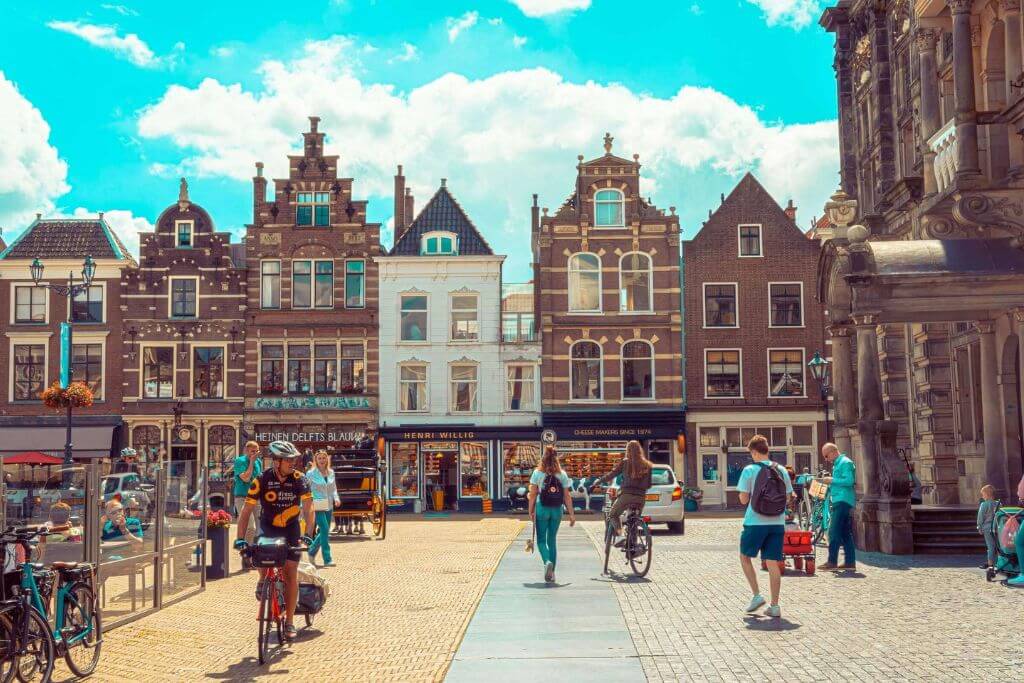
With the exception of the Thursday and Saturday market days and municipal holidays, Delft never feels crowded but yet retains a vibrant, energetic vibe. Here is a great place to rest if the throng in Amsterdam or Rotterdam has you feeling frazzled. There are so many places to visit, and in the evening, restaurants, pubs, and bars are packed with people that it never feels monotonous.
